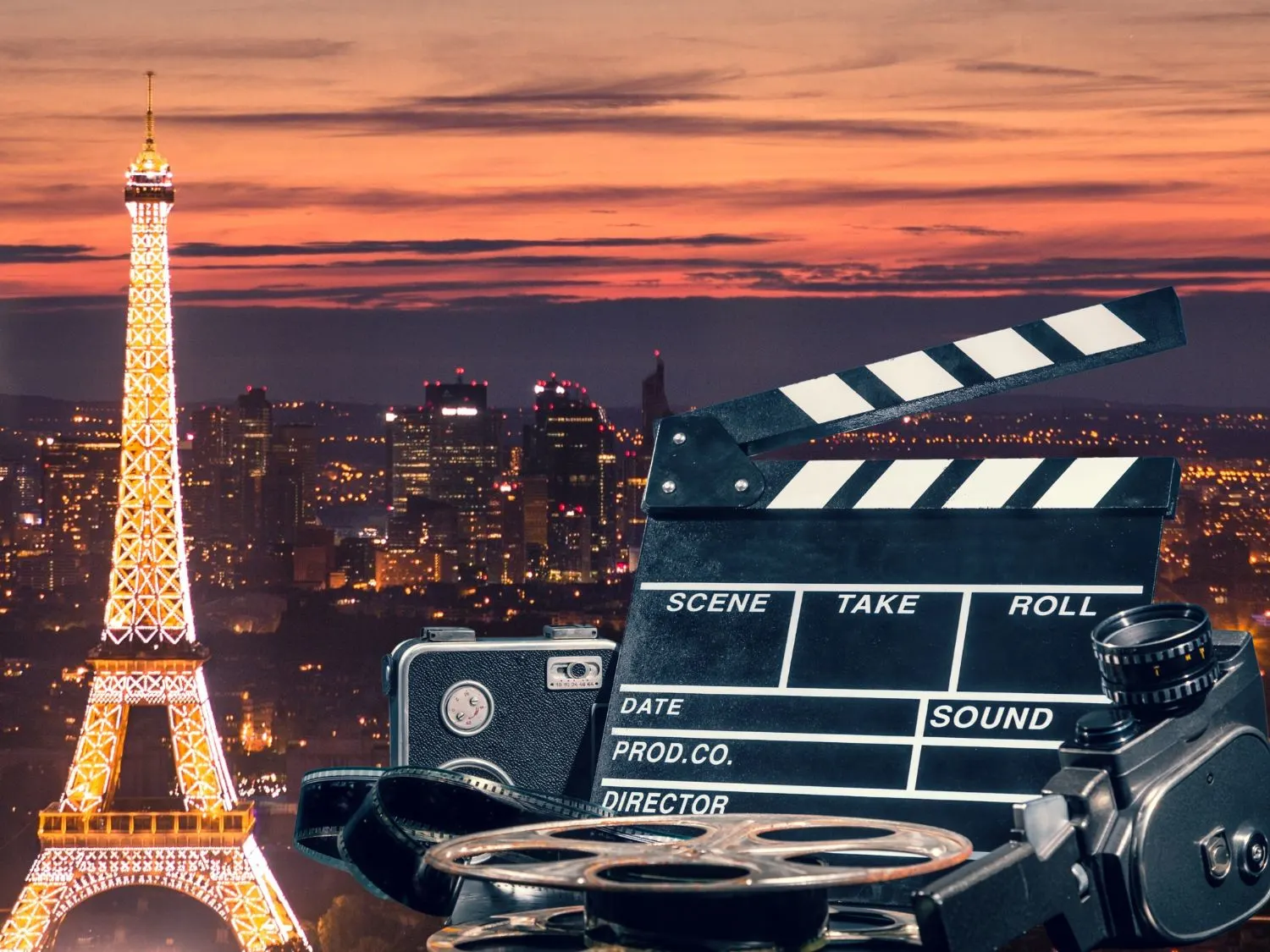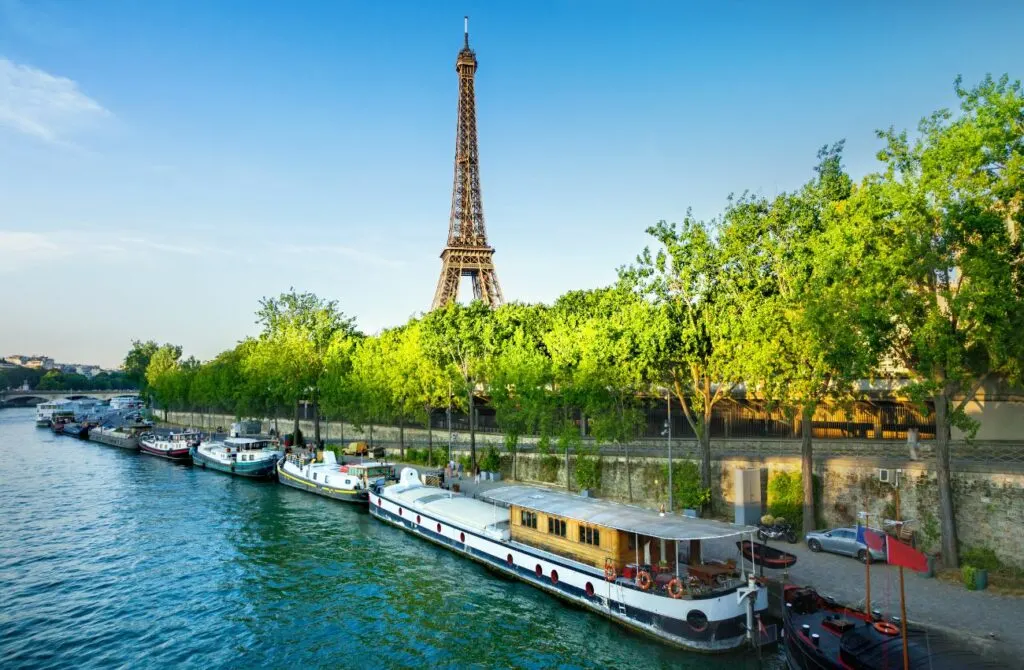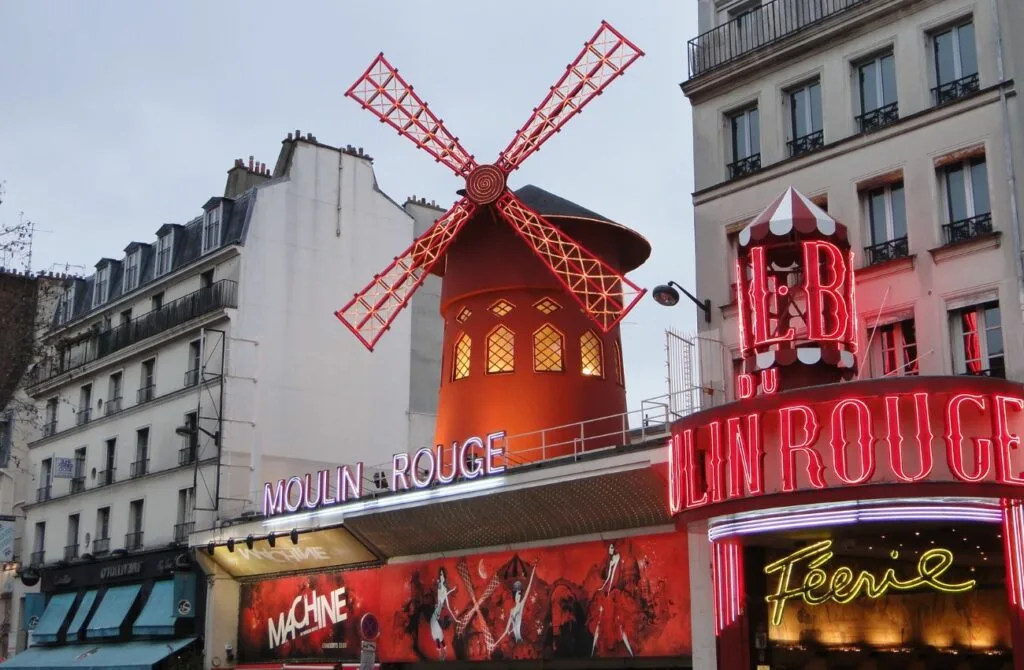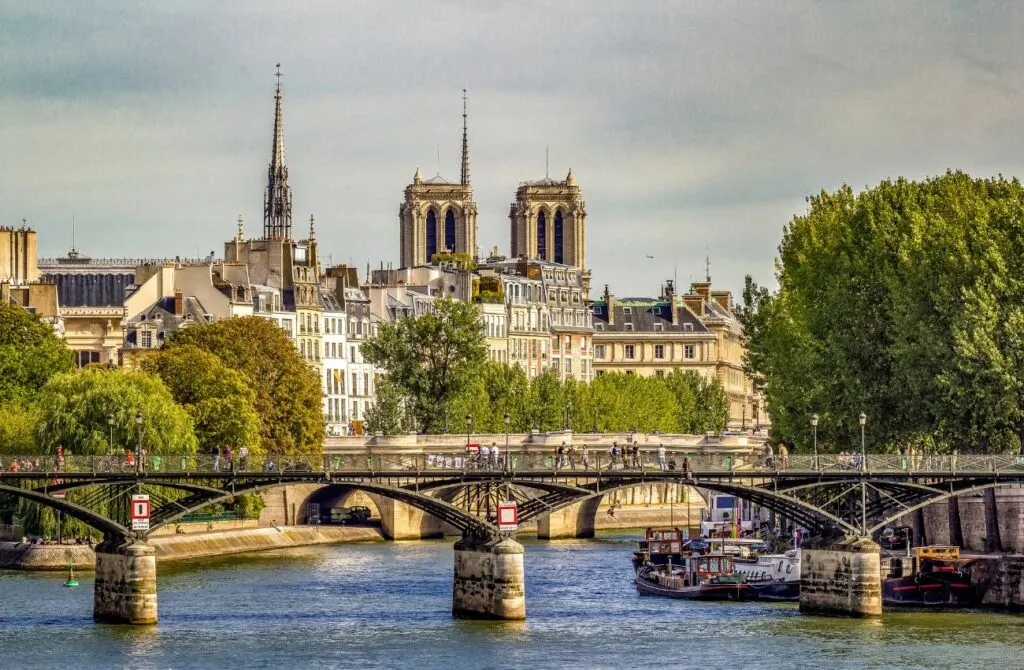Sofia De Vera combines a heartfelt passion for cinema with over 15 years of critiquing for esteemed film publications, wielding academic credentials from the University of Southern California and New York University, to serve as your personal guide through the enchanting worlds of film and television. Her full guest bio can be found here.
There are certain special cities across the world that have managed to cultivate their own enigmatic atmosphere and culture. Paris is one of those cities, and movies set in Paris typically manage to translate the unique atmosphere within the city to the big screen in a way that few places can ever match.
Sometimes that atmosphere is one of historical importance, sometimes it is this blending of different cultures, and other times it is the feeling of unhingedness and wall-to-wall excitement that infiltrates the city’s air. The only thing you can ever say for certain after watching these films is that Paris is never boring.
After all, Paris is not only a major economic and cultural center, with an important hub of air traffic, but it also has diverse streetscapes, heritage homes, a rich history, and an illustrious creative arts scene. Although it interrupts traffic and annoys neighbors, it is clear that in Paris, the filming of movies and series on its streets has a positive impact on tourism and the economy. Movies shot in Patis provide well-paying jobs, support local businesses, and in no small part have helped make the city the #1 tourism destination on Earth.
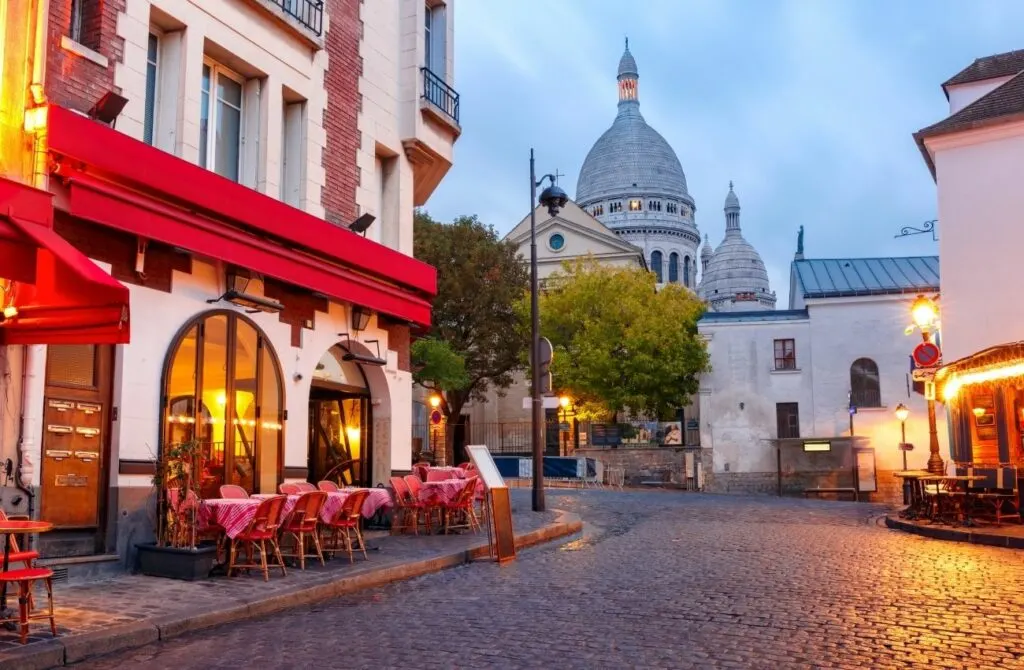
The first projected moving pictures shown to a paying audience was in Paris by the Lumière brothers in December 1895 in Paris and since this time, the city’s desirable traits and je ne sais quoi have attracted (and continue to attract) storytellers throughout the history of cinema, so that today the spirit of Paris has been immortalized in countless films. As a result, we have a wonderfully intricate and excellent collection of movies set in Paris from which we can dive into.
We love this because one of the reasons why we watch movies is that they are an excellent way to travel to different places while staying at home – and to determine if a destination elicits that oh-so-important spirit of wanderlust in us before ever investing in a ticket there.
Paris is a city with a reputation that precedes itself. The city is known for so many wonderful things, cultural landmarks, and historical events that nobody could summarize. The many names people have given to Paris are evidence of this: City of Lights, City of Love, City of Fashion.
Paris has a bit of everything for everyone. It is a city so old that it shows signs of being built even before the Roman empire. It is a city so beautiful that many more were modeled after it. A city so captivating that few people can hold back the urge to visit it.
Paris is made up of a million fantastic things, many of which can be found in this collection of films. Ranging from the sixties to two thousands, these movies all have a little bit of Paris in them. It is up to you to find which of them is the best.
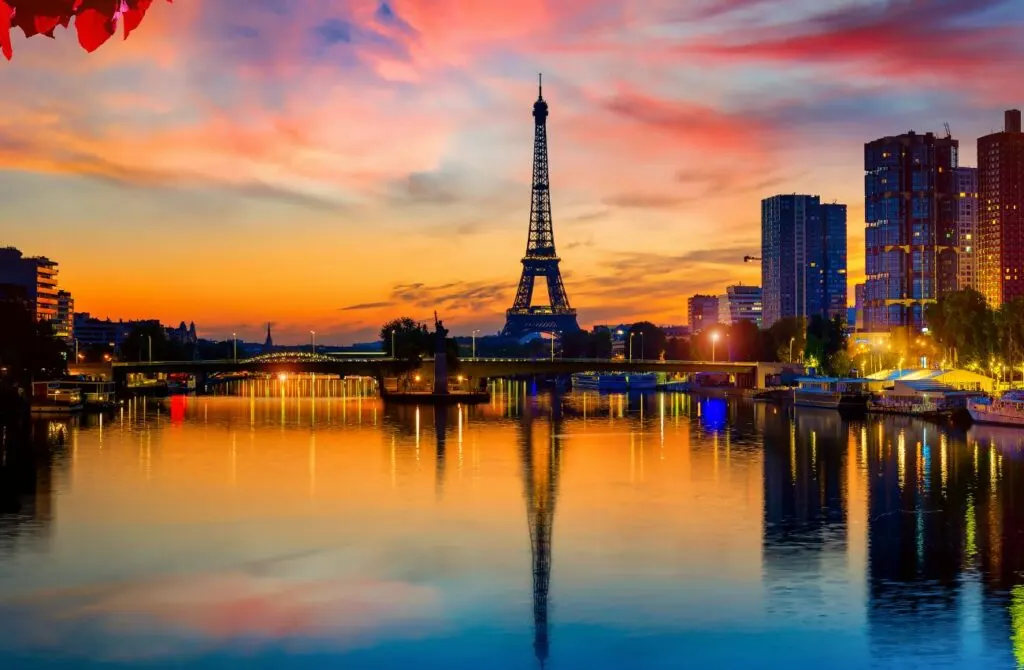
These French films have narratives that rely on their settings as much as their main protagonists, and as a result, spectators get a glimpse of this iconic country through the director’s eyes. To honor the concept of cinematic travel, we have also assembled lists of our favorite films shot in some of our all-time favorite travel destinations: Romania, Italy, Mexico, Ireland, Australia, Japan, Alaska, and Israel.
Wondering where to watch? It depends on where you live in the world and which streaming services you have. We link to the streaming service we watch on in each case - be it Netflix, Amazon Prime, Apple TV+, or elsewhere.
You can get one month free of Amazon Prime (or a 6-month trial for students) of Amazon Prime and also get immediate access to FREE Two Day shipping, Amazon Video, and Music. While you won't be charged for your free trial, you'll be upgraded to a paid membership plan automatically at the end of the trial period - though if you have already binged all these, you could just cancel before the trial ends.
Apple TV+ also has a one-week trial, and Hulu has a one-month trial (which can be bundled with Disney!). Another option might be using a VPN to access Netflix titles locked to other regions. Netflix is now available in more than 190 countries worldwide and each country has a different library and availability. US Netflix is (understandably) one of the best.
While we wish everything could just be in one place - for now, it seems these are the best streaming platforms to watch on.
Page Contents
- Amélie [Le Fabuleux Destin d’Amélie Poulain] (2001)
- Before Sunset (2004)
- Les Misérables (2012)
- Marie Antoinette (2006)
- Breathless [À bout de soufflé] (1960)
- Three Colours: Blue [Trois couleurs: Bleu] (1993)
- Jules and Jim [Jules et Jim] (1962)
- La Vie en Rose [La Môme] (2007)
- Julie & Julia (2009)
- Charade (1963)
- Hugo (2011)
- La Mome (2007)
- Intouchables (2011)
- Napoleon (1927)
- Moulin Rouge (1952)
- Le fabuleux destin d’Amelie Poulain (2011)
- Midnight in Paris (2011)
- Last Tango in Paris (1972)
- ‘Paris, je t’aime (2007)
- Ratatouille (2007)
Amélie [Le Fabuleux Destin d’Amélie Poulain] (2001)
This remarkable film brings a whimsical portrayal of the city of Paris and its people through the eyes of a young waitress. The story follows Amélie Poulain (Audrey Tautou), a lonely 18-year-old with a playful personality and imagination.
One day, she finds a hidden box in her apartment filled with photos of a boy who used to live there. Amélie decides to find the boy and give him back the box, which will take her on a wonderful trip through Paris.
Directed by Jean-Pierre Jeunet, one of the most influential French directors today, Amélie was one of France’s most successful and most praised films in recent years.
Amélie features one of the most charming portrayals of Paris: it is sure to make you visit as soon as possible. Fans of the film love to visit the Café des Deux Moulins, the place where Amélie was employed, in the neighborhood of Montmartre. Another location that those who see the movie love to visit is the Canal Saint-Martin, where Amélie spends her morning skipping stones.
These and many more stunning sights make Amélie the perfect film to watch before traveling to Paris.
Before Sunset (2004)
Before Sunset is the second film in Richard Linklater and Kim Krizan’s Before trilogy (preceded by Before Sunrise and followed by Before Midnight). Each film sees two lovers played by Ethan Hawke and Julie Delphy meet.
This time, Jesse finds himself on a book tour through Europe, and Céline comes to visit him during a reading in Paris. They haven’t seen each other in a long time, so they take the opportunity to wander around Céline’s natal city and catch up.
While Céline has become a journalist and activist, Jesse has formed a family and, perhaps most importantly, written a best-selling book about their first time together, nine years ago.
The three Before films are a great way to explore the city with its characters. In this case, most of the locations are presented just like in real life: the bookshop where Jesse does his reading, the charming Parisian café or the wonderful park built over the Viaduc des Arts.
The place featured most prominently in the film is the Saint-Paul Village, a maze of antique apartments that packs tons of Parisian charm.
Les Misérables (2012)
Les Misérables, by Tom Hooper, is an epic musical film set in early 19th century France. The film is an adaptation of the famous French novel written in 1862 by one of the country’s most significant artists: Victor Hugo.
It features an ensemble cast filled with stars from the United States and the United Kingdom. Most of the performances were thoroughly lauded, particularly those of Hugh Jackman and Anne Hathaway, with the latter winning Best Supporting Actress, both at the BAFTAs and Academy Awards.
Set in 1815, the film begins following Jean Valjean (Jackman), an ex-prisoner on parole after just being released from the Bagne of Toulon prison. He is harbored by a benevolent priest, who he tries to steal from, but the priest protects him and leads Jean to run away and pursue a better life.
While he indeed does so, becoming a respected businessman, the ghosts of his past find him: a former prison guard turned police chief, Javert (Russell Crowe), arrives at his new home looking for trouble. This plot will see two women entangled within it: Fantine, a worker at Jean’s factory (Hathaway), and Cosette (Amanda Seyfried), her daughter.
Les Misérables is a timeless classic that will keep you on the edge of your seat: by the end, you’ll be thankful that you gave this musical a chance.
Marie Antoinette (2006)
Marie Antoinette focuses on the intriguing life of the last Queen of France. Beginning in 1770, when Marie Antoinette was known as Maria Antonia, the youngest daughter of the Empress of Austria. As the story goes, she was sent to France to marry the young man who would become King Louis XIV, but wasn’t able to procure an heir.
This film chronicles her life in the court of Versailles, then as Queen, and finally her deposition as the French Revolution overthrows the monarchy. This historical drama was both written and directed by Sofia Coppola, the fantastic director behind the romantic drama Lost in Translation.
Marie Antoinette offers an excellent opportunity to explore France’s past: from the lavish Palace of Versailles to the poor and revolting districts in Paris. It´s a fantastic window through history, letting us see how the monarchs used to live at the time. The best part about the film is its production: the beautiful sets and the stunning dresses.
The film obtained several awards and nominations for these aspects of production, even winning the Academy Award for Best Costume Design.
Breathless [À bout de soufflé] (1960)
Breathless is a crime drama film directed by one of France’s best directors, Jean-Luc Godard. It tells the story of Michel (Jean-Paul Belmondo), a petty criminal who thinks a lot of himself, who meets an American aspiring journalist named Patricia (Jean Seberg).
The film is one of the very first examples of nouvelle vague or New Wave, a French art film movement that brought new narratives and styles to the screen.
One of the many things that set Breathless apart from other films at the time is that it wasn’t made in a studio: it was made on the streets, particularly the fascinating streets of 1960s Paris.
As such, the film features lots of scenes with stunning shots of the Champs Elysées, the expansive orderly parks that lie in the center of the city, and the Notre-Dame Cathedral, whose reputation as one of the most beautiful buildings ever cannot be understated.
Among less famous sites, the film takes us through boulevard St. Germain, where tiny Parisian cafés can be found left and right. Watching Breathless, you’ll get to experience Paris through the eyes of one of its best artists ever.
Three Colours: Blue [Trois couleurs: Bleu] (1993)
Three Colours: Blue is the first in a series of films by Polish filmmaker Krzysztof Kieślowski which explore the political ideals at the base of French democracy. Blue, the first color in the French flag, dives deep into the concept of liberty (freedom) and it’s many applications.
The film follows a woman Julie (Juliette Binoche), who suddenly loses her husband and daughter. As she finds herself devoid of any human bond, she tries to face this terrible loss by being alone, what she thinks of as “free”. Yet Julie will discover that humans cannot be freed, either from our past or from our love of each other.
The film takes place entirely in Paris. Among the many Parisian places show in the film, two stand out. First, there’s the Bir-Hakeim bridge, a gorgeous double-decked construction from the beginning of the 20th century that crosses the Seine, where Julie meets one of her husband’s friends.
Then there’s one of the last moments of the film, when Julie confronts her husband’s deepest secret: this scene is set in the Palais de Justice, the Parisian Supreme Court, one of the most imposing buildings in the whole city.
Jules and Jim [Jules et Jim] (1962)
Jules and Jim was both written and directed by another one of the best French directors, François Truffaut. It’s set during the World War I and tells the story of a complicated romantic entanglement between three people.
These people are the titular Jules (Oskar Werner), an Austrian writer who isn’t comfortable around people, and his French friend Jim (Henri Serre). When the two of them meet Catherine (Jeanne Moreau), the three begin a close relationship that is then broken apart by the war.
The thoroughly lauded film was adapted from a 1953 autobiographical novel by French avant-garde author Henri Pierre Roché, and features many Parisian sights portrayed in a very unique way.
By the shadows of Notre-Dame, we see Catherine diving into the Seine river, which crosses through the whole city, at night. During their time in Paris, both friends stay at the Villa Ottoz, in the neighborhood of Belleville, a haven for artists and bohemians that was sadly demolished in the seventies.
The most iconic scene in Jules and Jim, which finds the three friends joyfully running through a Parisian bridge, was shot in the same neighborhood, on the Passerelle de la Mare.
La Vie en Rose [La Môme] (2007)
This critically acclaimed film by Olivier Dahan brings the moving life story of French singer Édith Piaf to the screen. Played by Marion Cotillard, La Vie en Rose tells Piaf’s story in a non-linear fashion, going back and forth between her childhood in the early 20th century and her life as the most famous singer in all of France.
The film not only shows Piaf greatest’s moments, but it also depicts her many struggles with addiction and arthritis, which were so debilitating that by her forties she could barely perform.
La Vie en Rose brings us right into the height of historic French entertainment. While there are many captivating Parisian sights in the film, the most fascinating one is that of the Olympia. This enormous music hall was opened back in 1893 and served since then as the go-to hall to watch opera, ballet and orchestras in Paris.
During the fifties, the place was deep in debt and was about to file for bankruptcy. At the height of her career and dealing with her weakening sickness, Piaf performed a series of legendary concerts there that saved Olympia. These concerts are shown in La Vie en Rose, and they are truly something else.
Julie & Julia (2009)
Julie & Julia brings a twist to biographical comedy-dramas by telling two at the same time: that of famous chef and teacher Julia Child and that of amateur cook Julie Powell. This is a great film for any fan of French cuisine, which is definitely one of the best in the world.
Both written and directed by Nora Ephron, the acclaimed writer behind classic films like When Harry Met Sally, the film crafts a wonderful story about female power and overcoming the odds. The film jumps between the life of these two women, weaving together a moving narrative that will resonate with many watchers.
During the 1950s, Julia Child (Meryl Streep) moved to Paris in order to become a chef at the prestigious institution of Le Cordon Bleu. Even being the only woman in the class, and with the whole school against her, Child managed to keep studying while also writing a book teaching French cooking to American housewives.
Here is where the two stories meet: in 2002, young New Yorker Julie Powell decided to cook all the recipes featured in Mastering the Art of French Cooking, a book written by Child. Any foodie is going to love this film and the many French dishes cooked in it.
Charade (1963)
Charade, by Stanley Donen, sees Audrey Hepburn finding herself trying to solve her husband’s murder and catch the killer in 1960s Paris. The film does a great job at mixing a romantic comedy with a mystery thriller.
The story goes as follows: when American Reggie (played by Hepburn) returns to her home in Paris, she finds that everything is gone, even her husband who was killed. This sets Reggie on a chase for his murderer that will have her meet again with a charming man, known at first as Peter (Cary Grant), whom she met while traveling through the French Alps.
Charade is widely known for taking its characters through a chase in the streets of Paris. While the film begins with the stunning sight of the French Alps, it quickly returns to the city and we get to see some of its most iconic streets and buildings, most of which still stand today.
Charade will take you through Paris in a thoroughly entertaining romantic mystery. Her house, for example, is located on the charming boulevard Malesherbes: here, one can find many rich buildings characteristic of Paris. And, of course, the film features the Seine and the Champs Élysées.
Hugo (2011)
Hugo is an adventure film by acclaimed American director Martin Scorsese. The film is an adaptation of The Invention of Hugo Cabret, a book published in 2007 by Brian Selznick. Both novel and film are set in the 1930s and tell the story of Hugo (Asa Butterfield), a young boy who lives by himself in one of Paris’ biggest railway stations, the Gare Montparnasse.
The only thing keeping Hugo company is an automaton, a machine in the shape of a man, which he had discovered with his late father and tried unsuccessfully to repair.
While the boy tries to find a piece necessary to repair the automaton, he stumbles upon Georges Méliès (Ben Kingsley), one of the founders of modern cinema, and his goddaughter Isabelle (Chloë Grace Moretz). Together they will try to find the secret behind the robot, which will take them on a journey through the beginning of French cinema.
The film was the most nominated movie in the Academy Awards that year and won five prizes, including Best Art Direction. Hugo is an extremely charming movie that will surely put a smile on your face.
La Mome (2007)
In 2007, a biopic of French singer Edith Piaf hit theaters that would launch Marion Cotillard to stardom: La Vida en Rosa. The film was directed by Olivier Dahan and earned the lead actress her first Oscar for Best Actress, as well as being the second Oscar in that category to be awarded to a French woman, the first going to Simone Signoret for her work in The Ship of the bad (1965).
La Vida en Rosa narrates several important episodes in Piaf’s life, parts of her childhood, her adolescence, her beginnings in the world of music, her international triumph, her tormented love life, and finally, her death. However, the story is not told in a linear way since moments when she is already an adult in full musical swing and in physical decline are interspersed with her memories of her childhood and youth.
The original title of this feature film is “La môme” since that is the name she gave herself, “La môme Piaf” (the sparrow girl), at the beginning of it. During the German occupation of France in World War II, she changed her nickname to “Edith Piaf” (her real name was Édith Giovanna Gassion) and helped some Jewish musicians by taking advantage of her popularity with the Nazis.
In much of the world, the title of the film was changed to life in pink, for one of her most popular songs, “La Vie en Rose,” which she wrote herself and is a love ode that speaks of what she felt for the man she was in love with. It has been translated into several languages.
Intouchables (2011)
I don’t know to what extent it is fair to describe what Untouchable is achieving at the Spanish box office as a surprise success. And it is that, as my colleague Juan Luis recalled when giving his opinion on the film, it has been a historic success in France (and Germany), but that is no guarantee of anything in our country, where it is not very common for a European film, no matter how award-winning it may be, manages to dominate the preferences of the spectators. It is true that in the first weekend, ‘John Carter’ overtook it, but in its second weekend, there has been a small miracle.
What has been said is quite an anomaly at a time when trying to beat box office records during the first days of release is too important, only to then fall abruptly and quickly disappear from the list of the highest-grossing movies. In addition, it has violated one of the things that are so critical of some American releases: It was released several months late.
One of the most dangerous points that Olivier Nakache and Eric Toledano had to deal with, writers and directors, was the dangerous possibility of letting themselves be dominated by the temptation to turn ‘Untouchable’ into a sugarcoated product.
Fortunately, Nakache and Toledano do not want ‘Untouchable’ to be just another film of those that some have defined as ‘feel good,’ that is, works whose success is due more to the fact that they leave the viewer with a feeling of welfare than for having real artistic merits. It is undeniable that this is a feature film whose greatest merit is the achievement, to a greater or lesser degree, of that sensation.
Napoleon (1927)
Almost 100 years have passed since one of the most important films in the history of cinema premiered at the Paris Opera: Napoleon by French director Abel Gance.
In the film, we witness a total art where the limits of cinema are overwhelmed by the poetic language of the work. The theatrical performances, the enormous number of extras, the innovations in editing, and the juxtaposition of images, among other resources, created a new format never seen before in the history of cinema and that we will very rarely see again.
Abel Gance’s film is an experience with clear intentions of breaking the fourth wall of cinema. For example, in the second act, we see the composer Claude Joseph Rouget de Lisle present the anthem of the Marseillaise to the Assembly of the Revolution, causing the entire assembly to sing effervescently. Copies of the lyrics were distributed to the audience at the 1927 premiere for them to sing along to this scene. This is what Gance called “music of light”, an expansive cinema, where the public became part of the film.
Napoleon‘s premiere was a success, earning a 15-minute standing ovation. But critics tore it apart, calling the film a cacophony. Gance defended himself by saying: “When you listen to an orchestra, you don’t hear if it’s an instrument called a bassoon, flute, or oboe; what you hear is the ensemble.”
Unfortunately, Gance’s art of the future was not popular; his five-and-a-half-hour film was cut down to 100 minutes. Also, Napoleon, that year was overshadowed by the arrival of sound in the cinema. Before, silent film directors like Gance had to think in a poetic language, resorting to metaphors and the juxtaposition of images in order to be understood by the great masses of illiterate workers. With the arrival of sound, that poetic effort was no longer so necessary.
Moulin Rouge (1952)
Every John Huston movie is an act of redemption. Bohemian, delirious, and crazy protagonists identified as dangerous marginal are vindicated. Moulin Rouge points to that. Not only is it a portrait of the life of the French painter Henri de Toulouse-Lautrec, but it shows the artist in the liberation of his own pains through the immortality that genius brings him.
Huston tells the story of the physical and emotional suffering of Lautrec, the greatest exponent of post-impressionism, who at a very young age had an accident that atrophied his legs and prevented him from developing normally. Paraphrasing the existentialist philosopher Jean-Paul Sartre, if Hell is the gaze of others, in Moulin Rouge, it is a society that judges what is different as deformed.
Blind to Toulouse-Lautrec’s inner genius, the exterior marks him out as a dwarf, a cripple who draws, a circus attraction who can never be like the others. To go unnoticed in front of this hell of looks, Lautrec camouflages himself.
The space of the Moulin Rouge, a foundational cabaret of the Parisian bohemia, functions as a refuge for a caste of marginal characters who understand and protect each other like a true family. Prostitutes, dancers, drunks, clowns all form a ghetto portrayed by the painter.
Le fabuleux destin d’Amelie Poulain (2011)
In 2001, the actress Audrey Tautou gave life to Amélie, one of the most tender and beloved characters in European cinema at the time.
Charismatic, dreamy, creative, and empathic are just some of the adjectives that define the girl from Montmartre, who finds the meaning of her life when she discovers that helping others make her happier too.
But the concept of solidarity ‘helping others’ evolves in the head of the protagonist throughout the film. At first, she understands it in an idealized way, more typical of dreamers. Instead, at the end, when it comes to helping herself, overcoming fears and insecurities to achieve what would make her happy, that’s when she realizes that you have to put your feet on the ground.
Precisely in this lies the interest of showing Le fabuleux destin d’Amelie Poulain to boys and girls from 12 years. Because although it is important to have dreams and blindly believe in their realization, it is also important to assume the effort, often little taken into account, that will have to be made.
Behind, then, the choice of a dream, there is an element to value, and that is passion. Passion is the strength with which we want something, an objective, a person. In addition, there are also the skills, which are the way in which the actions that we will carry out to pursue a dream goal are specified.
Amélie Poulain is creative, curious, dreamy, daring. It is her abilities that made her attractive in the eyes of Nino Quincampoix, the boy with whom she has fallen in love with her. But she is also insecure and shy, and she hasn’t quite taken the step to relate to him.
With the obstacle of lack of confidence, Amélie did not count because this is the realistic part of her dream. Ultimately, she gets her way when she outdoes herself, testing the strength of passion, the desire for something.
In short, dreaming is a wonderful and necessary practice. Educate in the fight for dreams from passion and effort as well, so as not to fall into idealization and, later, into frustration.
Midnight in Paris (2011)
Film lovers are well aware of Woody Allen’s ability to create and direct incredibly disparate films. He can leave us in awe of Annie Hall, intrigued by Match Point, or slightly amused by Scoop. This time, the director of Vicky, Cristina, Barcelona returns completely rejuvenated, optimistic, and deliciously simple, giving us a wonderful comedy with touches of fiction called Midnight in Paris.
Gil Pender (Owen Wilson) is a Hollywood screenwriter who is stuck in the routine and monotony of his job. He is far from fulfilled in what he does and dreams that one day he will become an acclaimed writer who will be taken seriously. Her fiancée, Inez (Rachel McAdams), does not understand and does not share the thoughts and goals of her husband-to-be, sometimes calling him immature and ridiculous. Taking advantage of a trip to Paris to visit his in-laws, Gil, he will look for inspiration in the alleys and in the people of the so-called city of love.
As if it were Cinderella, the writer’s midnight walks will take him to the French capital in the twenties, where he will meet, among others, the novelist Ernest Hemingway (Corey Stoll), the illustrious painter Salvador Dalí (Adrien Brody), Adriana de Bordeaux, lover of Picasso (Marion Cotillard); the writer F. Scott Fitzgerald (Tom Hiddleston) along with his wife Zelda Fitzgerald (Alison Pill), the intellectual Paul Bates (Michael Sheen) and the renowned writer Gertrude Stein (Kathy Bates). In this fictional and oneiric world created from start to finish by Gil Pander, the artists mentioned above, who left their mark in one way or another on the city, will help you find inspiration in your novel and will make you see that love is not it has to be, far from it, complicated gibberish.
Woody Allen presents us with a fresh, funny, endearing, and tender comedy with scenes that take us into the French twenties despite the fact that this is not the time in which Gil lives, getting viewers to get a minimal idea of what It was made in those years, from the thoughts of the writers and artists, from the decoration of the bars, from the music and the lifestyle of those times.
Once again, Allen shows us that the simple and the simple can generate incredible beauty. And this is what happens with Midnight in Paris. The film does not have a complicated or convoluted plot, and the protagonists do not have a dark past, childhood trauma, or a hidden and dangerous secret that no one should know for their sake.
Instead, the film tells us about the motivations, overcoming, goals of each one, and the dreams that we still have to fulfill. It gives us a little push to do what we really want in life and not what is expected of us. In a certain way, it explains to us that we should take risks and fight for our dreams and that we should not let ourselves be defeated by things that do not make us happy or that do not give us anything; that in some way, we get our head out of the water and get away from the routine and monotony.
Last Tango in Paris (1972)
It is one of the most recognized films in the Italian filmmaker’s filmography, but also one of the most controversial that over time has become a classic.
The intense, Last Tango in Paris is one of the most recognized films by the Italian filmmaker Bernardo Bertolucci. Ella’s plot explores the relationship of a young woman in her twenties and a man 20 years older than her. The story follows Paul (Marlon Brando) and Jeanne (Maria Schneider), and how their first meeting, marked by sheer attraction and animalistic desire, turns addictive and toxic.
It was in 1972 that Bertolucci’s sixth feature film was released, and from its first press screening, the film shocked by exploring the sensuality of a young girl who engages in an intense romance with a man much older than her, and in which the roles of domination are explicit in front of the camera. The idea of only carnal encounters without knowing about each other stirred and shocked the most demure consciences. It was even banned in the filmmaker’s own home country, Italy.
A judge sentenced Bertolucci to five months in prison and ordered the negatives of the film to be burned. In Spain, during the Franco regime, it was also censored and saw its premiere five years later. The music of the Argentine artist Gato Barbieri gave the film an air of tragedy and eroticism.
‘Paris, je t’aime (2007)
A project that brings together some of the best directors on the current scene to film a story about that strange and powerful feeling called love, in the setting of a city like Paris, with a truly luxurious cast, must automatically have the essential viewing label.
Possibly the lack of proper promotion and distribution has made it possible for many people to miss out on ‘Paris, je t’aime’; Paris je t’aime’ with a double sensation of interest and fear; on the one hand, the number of well-known names and plenty of talent made up a juicy candy; on the other, collective films do not usually achieve great results, disappointing as a whole and revealing an obvious marketing operation.
The film we are dealing with falls back on the already standard defect of this type of production, of not managing to integrate all its stories, each one goes its own way, thus representing the diversity of styles of those responsible. In the end, however, one finds this to be relatively unimportant, thanks to the magnificent craftsmanship of some of the 18 stories (each titled as an area of Paris), and inevitably fascinated by the carousel of artists who have participated.
Ratatouille (2007)
Ratatouille is a film that teaches us the important message of how hard it can be to be you sometimes. It allows us to realize that what one wants, or what one is, is not always easy; we have many barriers that can limit us.
Following our own dreams and letting ourselves be guided by what our hearts tell us is the path that leads us to be happy. Remy is happy being a chef, despite his family’s denials and taking into account that being a mouse is not an easy path.
His desire and his spirit insert him into what he wants to be. In this way, we can see that the barriers that prevent us from achieving dreams can be eliminated. The value of friendship is highlighted in this path of search and personal development, Remy and Linguini help each other, and their friendship allows them to achieve their dreams. The family also has an important value, Remy finds himself in a dilemma between his family and his dreams, but he finally manages to solve it.
This fantastic story, full of adventures, emotions and very funny moments, is more than recommended to enjoy with the family, with the little ones in the house. He manages to unite the playful aspect (fundamental to creating learning) with important values that are not always easy to transmit. Add endearing and fun characters and an exciting adventure, thus arousing the interest of the little ones.
Remy belongs to a species; why deny it, repudiated by humans. This film now gives the rats a chance to leave the role of villains in which they seemed typecast. The filmmakers decided to see these animals from a new perspective and up close, so they brought them to their offices in cages to observe their every move and how they interacted with each other.
The whipping with their tails, the nervous movements with their whiskers, the way they grab food, sniff it, bite it would later be those of Remy and his family on the big screen. But this improvised company also surprised the team with its enormous sociability: the rats sometimes came to play with the animators and even let them pet them.
For the making of this film, the Pixar animation team undertook a laborious culinary ‘research’ in the best restaurants in Paris to find out everything from their design to the atmosphere that is breathed through the chefs’ clothing, their language, and the latest of the spices they add to their stews.

